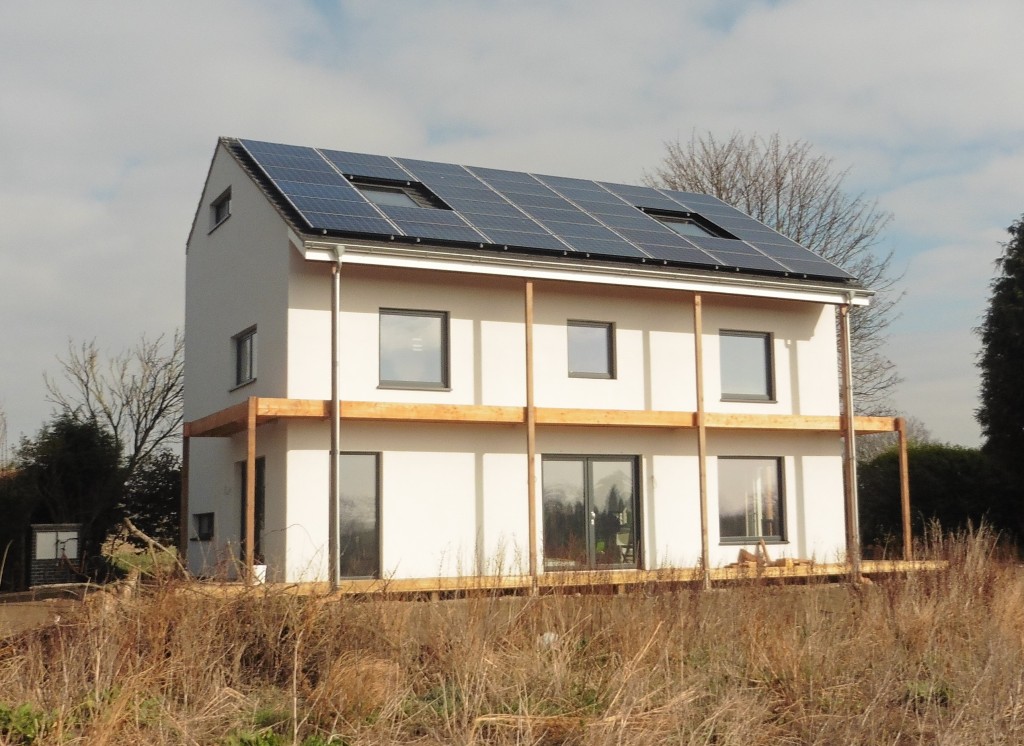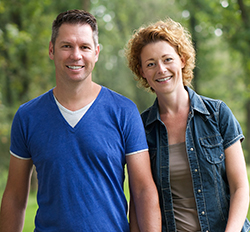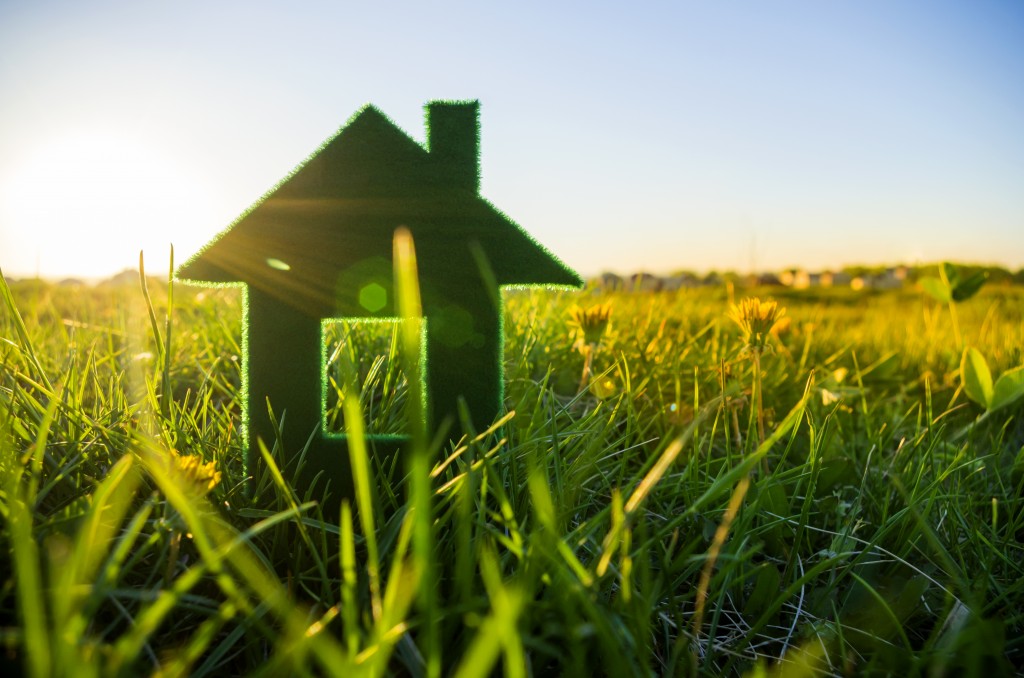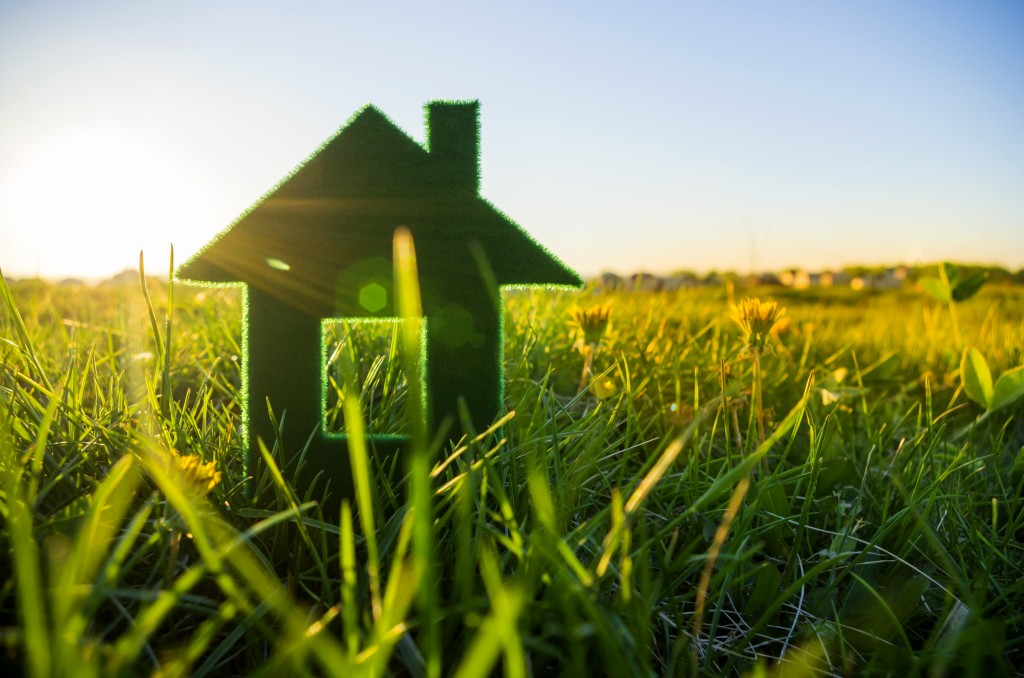Is energy efficiency on your housing wish list? Do you want an environmentally friendly home? If so, there are some specially designed mortgages for this niche part of the market. Stephen Little reports
Global climate change is viewed as one of the greatest challenges of our time and its impact is making homeowners more conscious about what they can do to help the environment.
But what options are there available for borrowers keen to do their bit to help save the planet?
Common throughout the US, green mortgages have grown in popularity in recent years as people become more aware of issues affecting the planet such as global warming and pollution.
However, they remain a niche product and are currently offered by only a handful of lenders. Despite the attempts of various governments over recent years to increase interest in ethical and green lending, the market remains relatively small.
The underlying aim of a green mortgage is to benefit the environment, which can be done in a variety of ways.
They give homebuyers the opportunity to finance the purchase of a sustainable property through a lower interest rate to make their home more energy efficient through green measures such as double glazing or solar panels.
A green mortgage might be offered to a buyer who is purchasing a property made from sustainable material or is looking to make energy efficient improvements to their home. Alternatively, a lender might make a donation to an ecological charity on your behalf, or plant trees to offset carbon emissions.
Emissions from the UK housing sector currently account for 25% of all UK greenhouse gas emissions.
Richard Twinn, policy advisor at the UK Green Building Council, said that it is important to find ways of reducing energy loss and increasing energy efficiency in homes to reduce carbon emissions to meet climate change targets.
“In the UK we have very ambitious carbon targets to reduce our carbon emissions by 80% by 2050. Reducing the amount of energy we use in our homes is one of the most cost effective ways of bringing down carbon emissions.
“Offering green mortgages with lower interest rates will encourage people to make their homes more energy efficient.
“Finance is one of the biggest barriers to installing energy efficiency measures in properties. If you can have specific mortgage extension products which are attached to making energy efficient renovations, that frees up capital to allow people to do it.”
Green mortgages
The Ecology Building Society offers a range of mortgages for environmentally-friendly properties and building projects.
Available for first-time buyers, home movers and for those looking to remortgage, it lends on criteria based on energy use, pollution, saving resources and supporting sustainable communities.
There are four levels of discount off a standard variable mortgage ranging from 0.50% to 1.25%. The level of discount offered depends on the energy standard of the home, so more energy efficient the home is, the bigger the saving you can make on your mortgage.
For example, you could get up to 0.75% off the standard variable rate by getting an A grade on your Energy Performance Certificate (EPC). To get the top discount of 1.25% you would need to achieve a Code for Sustainable Homes level of six.
Dan Capstick, mortgage manager at Ecology Building Society, said: “If you look at UK housing stock as an example, it is pretty inefficient in terms of its performance. On every project that we lend on there has to be an environmental aspect to it, and the way we traditionally measure that is through improving the energy efficiency of properties.
“The way we incentivise people to do this is by offering mortgage discounts based on the energy standard people set out to achieve. The higher the energy standard that they set out to achieve, the greater the potential discount and lower the mortgage rate.”
The Ecology specialises in lending for projects that meet the Passivhaus standard. This is a low energy construction standard that far exceeds current building regulations and was developed in Germany. Commonly used throughout Europe, the design of Passivhaus buildings ensure they use around 90% less energy for heating than the average house.
They typically require very little energy for heating or cooling, whilst providing a high level of comfort. They use a heat recovery system that ensures extracted air warms up fresh air that comes in and draughts are eliminated.
The Passivhaus standard aims to reduce space heating requirements to such a low level that a conventional heating system is no longer needed.
Common features include massive insulation up to 300mm thick, triple glazing and high levels of airtightness.
Building to the Passivhaus standard can be about 10% more expensive, but the move could save you around £900 a year on energy bills as well reducing carbon emissions to zero.
Capstick said: “We offer a variable rate upfront, whereas other lenders may offer a discount on the back end of the construction period based on the outcome of what they have achieved. Raising the energy efficiency of existing housing stock is really important to reduce carbon emissions.
“We are experiencing very high levels of demand for our self-build and custom-build mortgages, so we are currently focusing on projects aiming for Passivhaus as it brings the greatest gains in terms of carbon reductions. Passivhaus properties have lower running costs and rarely have central heating systems because the airtightness is so good. It is a difficult standard to achieve, but it is possible.”
For the eco-conscious looking to build their own home or do up a property, Buildstore also offers a green mortgage with a discounted rate.
Available for self-build, renovation, refurbishment and conversion properties, Buildstore’s Eco Accelerator Mortgage does not just focus on energy performance and generation, but also on the building fabric too.
Buildstore has a 0.75% discount on its standard variable rate which is 4.24%. There is a minimum deposit of 25% and the maximum loan you can take out is £375,000.
To qualify, more than 50% of the building fabric should include bio-based materials, the building should achieve lower U-Values than the new building regulations, and technology which generates energy from a renewable source should be included.
Environmental builders’ merchant Ecomerchant will evaluate each project to ensure it meets with lender criteria and also provide a free eco-review for customers detailing all the alternatives to standard materials which can be incorporated into your project.
Unsecured loans
Critics warn that buyers should be careful when taking out a green mortgage as unless you need it for a specialist build that other lenders are not prepared to lend on, you could end up paying more than necessary.
Ray Boulger, technical director at the mortgage broker John Charcol, said: “If you don’t need a special type of mortgage and if you’re looking to finance a normal property then you could end up paying more if you go for a green mortgage, simply because there is very little choice.”
Most banks will give a further advance for green home improvements providing income and amount of equity is adequate.
Boulger said that people looking for funding for green projects should consider taking out an unsecured loan as this could offer better value than a remortgage, further advance or second charge mortgage.
He said: “The other option people should think about if they want to make home improvements is by taking out an unsecured loan.
“Unsecured loans start at about 3.4% if you are borrowing between £7,500 to 20,000 over five to seven years. Although it is a shorter time frame compared to remortgage, you get the benefit of a very good interest rate.
“If you decide to remortgage, the loan-to-value is going to be very high. You will end up not only paying a higher rate on the amount you want to borrow but also on the total mortgage. So you might well be better off funding additional borrowing with an unsecured loan.”
[box style=”2″]
Case study: A cosy, warm, energy efficient home

Rob and Karin Aitken decided to build a property using the Passivhaus standard to help improve their standard of living and reduce their carbon footprint.
They took out a mortgage with the Ecology Building Society and couldn’t be happier with the end result.
Rob says he loves the fact that the home is warm and comfortable throughout the year.
 He says: “You can use the whole house because all the rooms are the same temperature. You don’t have to worry somewhere being cold or draughts because it’s airtight.”
He says: “You can use the whole house because all the rooms are the same temperature. You don’t have to worry somewhere being cold or draughts because it’s airtight.”
The property consists of a timber frame with a partial fill cavity and rendered block work on the outside.
It has larger windows on the south facing side to help maximise solar gain and the 38 solar panels on the roof help provide more power than the house consumes for its heating, hot water and other energy needs. The airtightness and design of the property means it does not require a traditional heating system.
Rob says: “We wanted to minimise the energy that we use without having to change our lifestyle. The house is effectively carbon neutral.”
While Passivhaus construction is traditionally seen as being more expensive than a similar sized house, Rob and Karin wanted to demonstrate it was possible to build one for around the price of a standard home.
They completed their build on a budget by using materials and techniques familiar with British builders. Everything in their house, except for the windows, airtightness membranes and ventilation system, can be found in a typical builder’s yard.
The whole house produces more energy than it consumes over the year, which has helped to dramatically reduce their household energy bills.
Karin says: “We have also put solar panels in the roof which means we produce as much energy as we consume, maybe slightly more. Over the year we will be paid more than the cost of the electricity that we import. We save £1,000 a year on bills and get paid around £800 a year for what we produce and export to the National Grid.” Rob says that the mortgages on offer from other lenders were quite restrictive for what they wanted to do.
He says: “The Ecology was happy to work on a project that was not only environmental but also willing to be more flexible on the construction. It also offers mortgages at affordable rates which compare well to other lenders.
Rob adds: “It would be great if all mortgage providers supported eco-conscious projects in this way as there is a lot of scope to build more environmentally-friendly houses that require less energy.”
[/box]
The LENDERS project
Increased accuracy in mortgage lending could be key in helping households to make energy efficient improvements as well as giving borrowers more bang for their buck.
The UK Green Building Council (UK-GBC) has joined forces with mortgage lenders and building industry experts for the LENDERS project to establish if there is a link between energy costs, affordability and mortgage borrowing. Partners involved include Nationwide Building Society, Principality Building Society, the Energy Saving Trust and University College London.
According to the UK-GBC and UCL, the current approach for estimating energy costs by lenders can be inaccurate by as much as £45,000 over the course of a 25-year mortgage for even a relatively efficient modern home
The research will test the use of EPC data in estimating energy costs on individual homes and look at the potential to incorporate that estimate into the mortgage affordability calculations.
Predicting energy costs more accurately would allow mortgage lenders to better estimate how much a homeowner would be able to afford to repay each month on their mortgage. This could encourage lenders to offer buyers looking for an energy efficient home a larger maximum mortgage to go house hunting with. It could also help encourage buyers towards homes with lower energy bills and increase their willingness to invest in improving energy efficiency.
Twinn said: “Energy Performance Certificates provide a rough estimate, but they are not overly accurate. Our research last year suggested you could double the accuracy of the energy bill estimates which are currently being used in mortgage affordability calculations.
“So if we can provide evidence to say there is a link between energy costs and mortgage affordability, there is a much stronger case for lenders to take into account the energy efficiency of the property when offering a mortgage. They could effectively lend more or at a lower interest rate for more energy efficient properties.
“If mortgage lenders are able to offer bigger loans for more efficient properties, then over time it is also possible that you will start to see more of a direct link between energy efficiency and property value.
“It could encourage people to do more energy efficient retrofits, which will help the environment and give them lower energy bills at the same time.”





